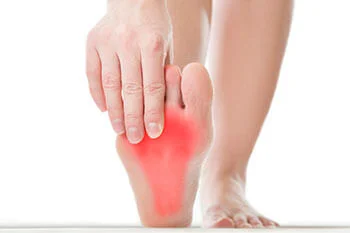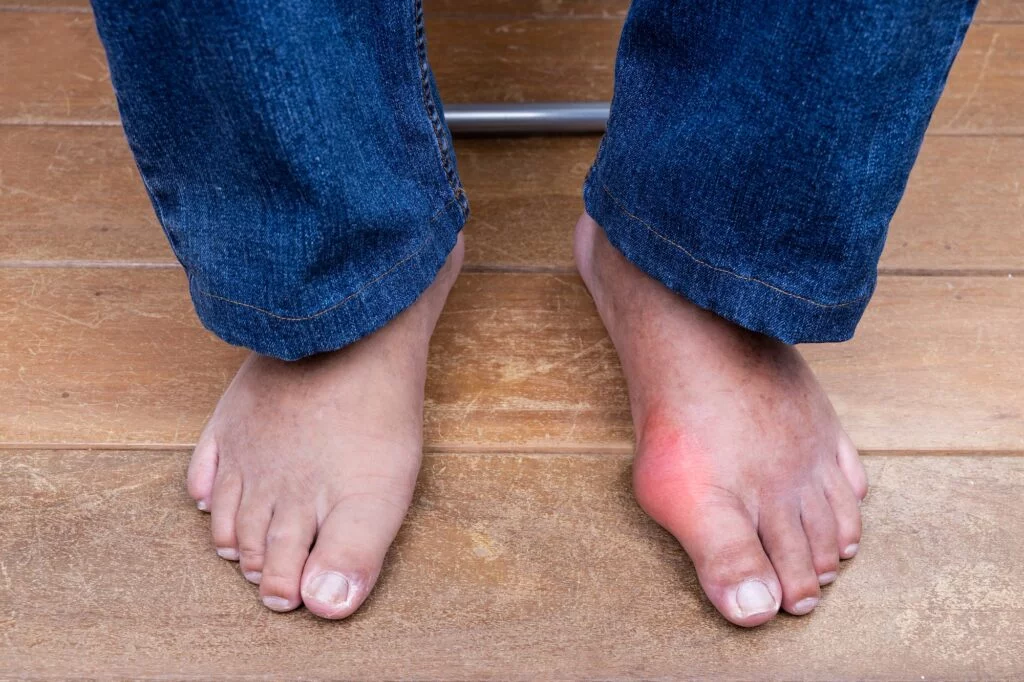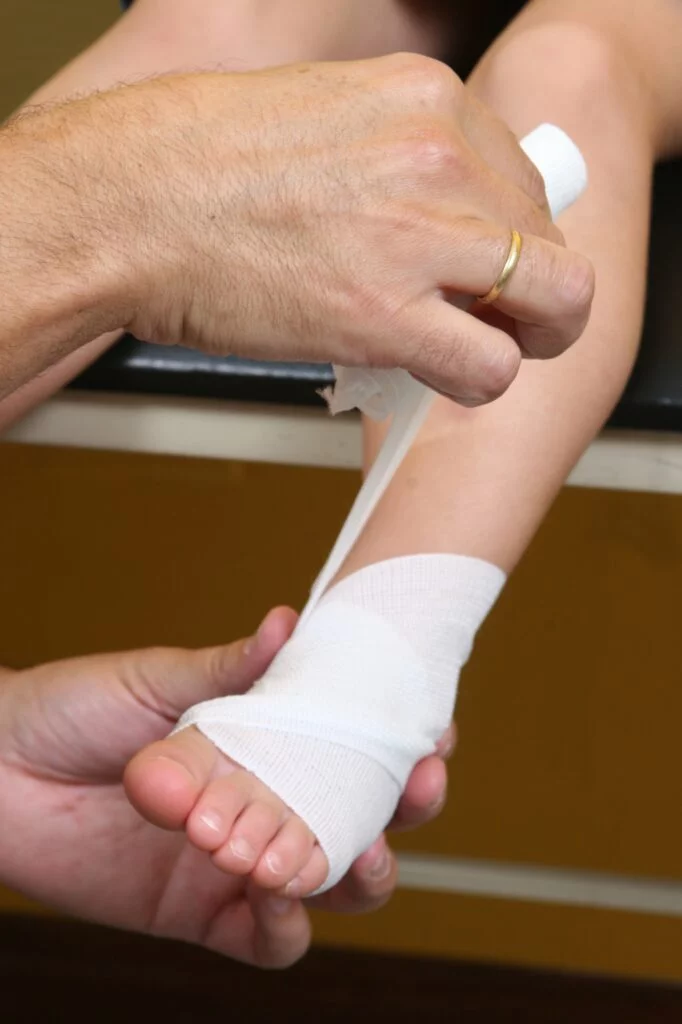Table of Contents
Overview
Gout and arthritis. Two words no one wants to hear, let alone together. At University Foot & Ankle Institute, our board-certified podiatrists can help diagnose and create a plan to alleviate your pain.
Have you experienced any of the following:
- Waking up often in the middle of the night with the sensation that your big toe is on fire.
- Your big toe feels hot, swollen, and tender.
- You have sudden, severe attacks of pain and swelling in the joints and the big toe.
If any of the above are hitting close to home, you may be suffering from gouty arthritis
What Is Gouty Arthritis?
Symptoms of Gouty Arthritis
There are several symptoms of gouty arthritis:
- Intense joint pain, especially in the big toe
- Discomfort with any kind of movement involving the affected joint
- Swelling and tenderness around the joint
- Redness and warmth of joint
- Stiffness and limited motion (With time, it may become impossible to move those joints)
How Gout Works
Causes of Gouty Arthritis
Lifestyle
You are at a higher risk for gout if any of the following apply to you:
- Heart and kidney disease
- Obesity
- Diabetes
- Medications like diuretics and low-dose aspirin
- Male between 30-50 years old
- Family history of gout
- Trauma or surgery
Diet & Alcohol
Diet plays a large role in gout attacks. Foods that can cause high levels of uric acid include:
- Seafood, like shellfish, sardines, tuna
- Red meat, including pork, lamb, and beef
- Beer and distilled liquors
- Sugary foods and sweetened beverages
- Organ and glandular meats (such as liver and kidney)
History of Gout
Diagnosing Gout
Some tests our board-certified podiatrists will use to diagnose gout include:
- Joint fluid test
- Blood test
- X-ray
- Scan
- MRI
- Ultrasound
- Dual-energy computerized tomography (DECT)
Treatment Options for Gout
Medicine:
Lifestyle:
As with any arthritis, medication will only help keep your pain and inflammation in check. To reduce recurrent attacks, a lifestyle change has to be made. This includes:
- Limiting or stopping alcohol
- Drinking plenty of water
- Avoiding red meat and organ meats
- Limiting items high in fructose
- Eating a healthy diet full of vegetables, fruits, and whole grains
- Reducing intake of saturated fats including high-fat dairy products
- Exercising regularly
Managing Gout Pain with Orthotics
When You Should Come See Us
If you suspect you are suffering from a gout attack, make an appointment right away to come see us. The pain likely won’t go away until you are given the proper medication. More importantly, without treatment, gout can cause joint erosion and deterioration. This leads to further complications and the need for medical interventions down the road.
In time, with a change in lifestyle, foot orthotics, and support from your board-certified podiatrist, gout can be managed.
Call us to make an appointment to start tackling your gout now!
FAQs - Gouty Arthritis
Board-Certified Podiatric Foot and Ankle Specialist, Dr. Gary Briskin, DPM, FACFAS, began his medical training by serving a residency at Flint General Hospital in Michigan. Once completed, he established a practice in Century City Hospital, where he soon became chief of podiatric surgery.
Dr. Briskin is a Diplomat of the American Board of Podiatric Surgery and a Fellow of the American College of Foot and Ankle Surgeons. He also serves as an assistant clinical professor at the UCLA School of Medicine and is co-founder and co-director of University Foot and Ankle Institute.






